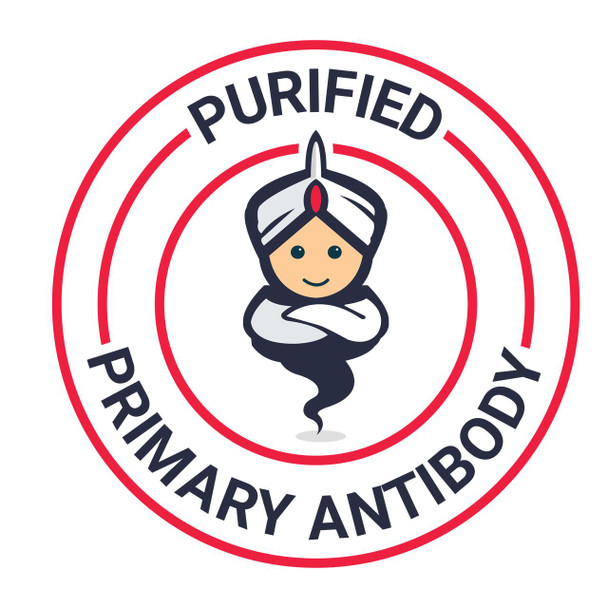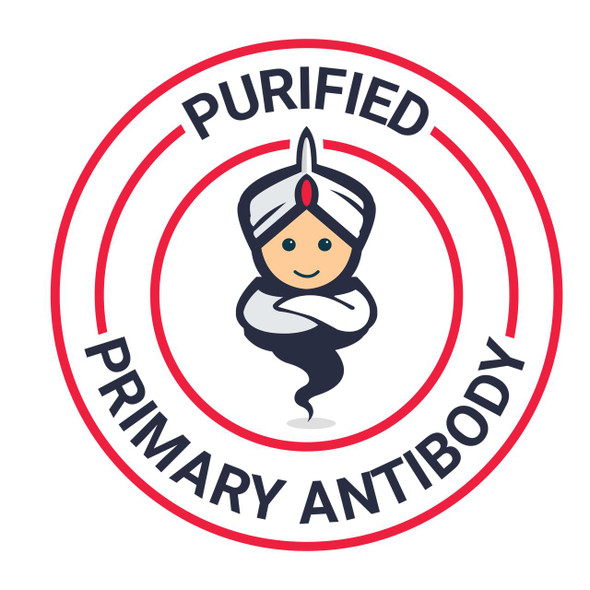Description
system_update_altDatasheet
| Product Name: | CD3 monoclonal antibody (PE) |
| Product Code: | AGIM0338 |
| Size: | 100 µL |
| Reactivity: | Human |
| Clone: | OKT-3 |
| Applications: | Flow Cytometry |
| Conjugate: | PE |
| Isotype: | IgG2a |
| Host Species: | Mouse |
| Storage: | Store at 4°C. Avoid prolonged exposure to light. |
| Uniprot: | P20963 |
| Background: | CD3 complex is crucial in transducing antigen-recognition signals into the cytoplasm of T cells and in regulating the cell surface expression of the TCR complex. T cell activation through the antigen receptor (TCR) involves the cytoplasmic tails of the CD3 subunits CD3 gamma, CD3 delta, CD3 epsilon and CD3 zeta. These CD3 subunits are structurally related members of the immunoglobulins super family encoded by closely linked genes on human chromosome 11. The CD3 components have long cytoplasmic tails that associate with cytoplasmic signal transduction molecules. This association is mediated at least in part by a double tyrosine-based motif present in a single copy in the CD3 subunits. CD3 may play a role in TCR-induced growth arrest, cell survival and proliferation. The CD3 antigen is present on 68-82% of normal peripheral blood lymphocytes, 65-85% of thymocytes and Purkinje cells in the cerebellum. It is never expressed on B or NK cells. Decreased percentages of T lymphocytes may be observed in some autoimmune diseases. |
| UniProt Protein Function: | CD3Z: a T cell surface glycoprotein that is a component of the T cell antigen receptor. Plays an important role in coupling antigen recognition to several intracellular signal-transduction pathways. Low expression of the CD3-epsilon results in impaired immune response. Two alternatively spliced isoforms have been described. |
| UniProt Protein Details: | Protein type:Receptor, misc.; Membrane protein, integral Chromosomal Location of Human Ortholog: 1q24.2 Cellular Component: T cell receptor complex; cytoplasm; plasma membrane; integral to membrane; alpha-beta T cell receptor complex Molecular Function:identical protein binding; protein binding; protein homodimerization activity; transmembrane receptor activity Biological Process: regulation of immune response; viral reproduction; T cell costimulation; innate immune response; T cell receptor signaling pathway; regulation of defense response to virus by virus Disease: Immunodeficiency 25 |
| NCBI Summary: | The protein encoded by this gene is T-cell receptor zeta, which together with T-cell receptor alpha/beta and gamma/delta heterodimers, and with CD3-gamma, -delta and -epsilon, forms the T-cell receptor-CD3 complex. The zeta chain plays an important role in coupling antigen recognition to several intracellular signal-transduction pathways. Low expression of the antigen results in impaired immune response. Two alternatively spliced transcript variants encoding distinct isoforms have been found for this gene. [provided by RefSeq, Jul 2008] |
| UniProt Code: | P20963 |
| NCBI GenInfo Identifier: | 4557431 |
| NCBI Gene ID: | 919 |
| NCBI Accession: | NP_000725.1 |
| UniProt Secondary Accession: | P20963,Q5VX13, Q8TAX4, B1AK49, |
| UniProt Related Accession: | P20963,A46461 |
| Molecular Weight: | 18,696 Da |
| NCBI Full Name: | T-cell surface glycoprotein CD3 zeta chain isoform 2 |
| NCBI Synonym Full Names: | CD247 molecule |
| NCBI Official Symbol: | CD247 |
| NCBI Official Synonym Symbols: | T3Z; CD3H; CD3Q; CD3Z; TCRZ; CD3-ZETA |
| NCBI Protein Information: | T-cell surface glycoprotein CD3 zeta chain; CD3zeta chain; TCR zeta chain; CD247 antigen, zeta subunit; T-cell receptor T3 zeta chain; CD3Z antigen, zeta polypeptide (TiT3 complex); T-cell antigen receptor complex, zeta subunit of CD3 |
| UniProt Protein Name: | T-cell surface glycoprotein CD3 zeta chain |
| UniProt Synonym Protein Names: | T-cell receptor T3 zeta chain |
| UniProt Gene Name: | CD247 |
| UniProt Entry Name: | CD3Z_HUMAN |




 Mouse CD3 Monoclonal Antibody (PE Conjugated) [17A2](AGEL0656)](https://cdn11.bigcommerce.com/s-rd6ounxcu2/images/stencil/590x590/products/11922/15976/mouse-cd3-monoclonal-antibody-pe-conjugated-17a2agel0656__87582__23566.1706269756.jpg?c=1)
 Human CD3 Monoclonal Antibody (PE Conjugated) [OKT3](AGEL0058)](https://cdn11.bigcommerce.com/s-rd6ounxcu2/images/stencil/590x590/products/10995/15049/human-cd3-monoclonal-antibody-pe-conjugated-okt3agel0058__26482__39246.1706269307.jpg?c=1)
 Mouse CD3 Monoclonal Antibody (PE Conjugated) [17A2](AGEL0099)](https://cdn11.bigcommerce.com/s-rd6ounxcu2/images/stencil/590x590/products/11012/15066/mouse-cd3-monoclonal-antibody-pe-conjugated-17a2agel0099__77126__38773.1706269315.jpg?c=1)